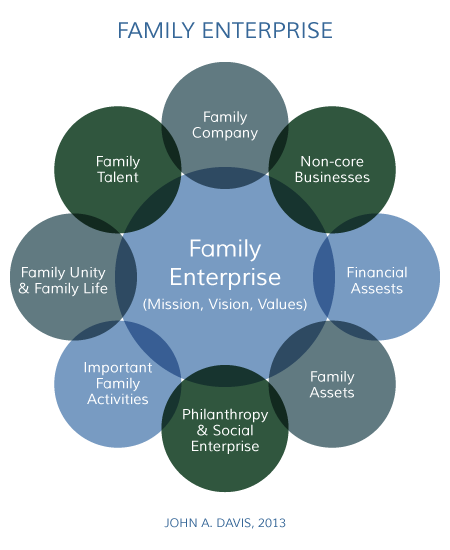How To Generate Profitable Ideas for Family Businesses

Imagine you're sitting around the dinner table with your family, and someone says, "We should start a business together." It's an exciting thought, isn't it? But where do you begin? How do you come up with profitable ideas for family-owned businesses that will not only generate revenue but also create generational wealth?
Starting a family enterprise can be a rewarding journey, both financially and emotionally. It's an opportunity to build something meaningful together, leveraging each family member's unique skills and passions. But to ensure business profitability, you need entrepreneurial ideas that are innovative, feasible, and marketable. So, let's dive in and explore how to generate profitable ideas for your family business.
Understanding Family Business Dynamics
Before we delve into idea generation, it's crucial to understand the dynamics of a family business. Family enterprises are unique because they blend business and family systems. This blend can be a double-edged sword—it can foster unmatched loyalty and commitment, but it can also lead to tension and conflict.
According to the Family Firm Institute, family businesses account for two-thirds of all businesses worldwide. This statistic underscores the significance of family enterprises in the global economy. However, it's essential to approach this venture with a clear understanding of the family's shared values, goals, and roles.
Defining Your Family's Shared Vision
Every successful family business starts with a shared vision. What do you collectively dream of achieving? Is it financial independence, community impact, or perhaps a legacy that spans generations? Your shared vision will guide your entrepreneurial ideas and small business strategies.
To define your vision, consider holding a family meeting. Discuss your aspirations, strengths, and weaknesses. Ask yourselves, "What are we passionate about? What skills do we bring to the table? What kind of impact do we want to make?" These questions will help you align your goals and set a clear direction for your business.
Assessing Your Family's Skills and Resources
Once you have a shared vision, the next step is to assess your family's skills and resources. Each family member brings unique talents and experiences to the table. Identifying these strengths will help you generate profitable ideas that capitalize on your collective expertise.
Create a skills inventory by listing each family member's abilities, interests, and resources. For example, one family member might be a marketing guru, while another has a knack for finance. This diversity can be a significant advantage, allowing you to cover various aspects of the business effectively.
Generating Profitable Ideas
Now that you have a clear vision and an understanding of your family's strengths, it's time to generate profitable ideas. This process involves brainstorming, research, and validation. Let's break it down into actionable steps.
Brainstorming Entrepreneurial Ideas
Brainstorming is a creative process that encourages the generation of many ideas without judgment. Gather your family and set aside dedicated time for brainstorming sessions. Encourage everyone to share their thoughts, no matter how unconventional they may seem.

Here are some tips to make your brainstorming sessions productive:
- Set Ground Rules: Establish guidelines such as no criticism during the brainstorming phase, encouraging wild ideas, and building on each other's suggestions.
- Use Visual Aids: Whiteboards, sticky notes, and mind maps can help visualize ideas and connections.
- Think Outside the Box: Don't limit yourselves to traditional business models. Explore innovative and unconventional ideas.
Researching Market Demand
Once you have a list of potential ideas, the next step is to research market demand. This involves understanding your target audience, competition, and market trends. Conducting thorough market research will help you validate your ideas and identify the most profitable opportunities.
Use online tools and resources to gather data. Websites like Google Trends and SEMrush can provide valuable insights into market trends and consumer behavior. Additionally, talking to potential customers and industry experts can offer firsthand information.
Validating Your Ideas
Validation is a critical step in the idea generation process. It helps you determine the feasibility and profitability of your entrepreneurial ideas. Here are some ways to validate your ideas:
- Create a Minimum Viable Product (MVP): Develop a basic version of your product or service and test it with a small group of customers.
- Conduct Surveys and Interviews: Gather feedback from potential customers to understand their needs and preferences.
- Analyze Competitors: Study your competitors to identify gaps in the market and opportunities for differentiation.
Developing Small Business Strategies
Once you have validated your ideas, it's time to develop small business strategies that will drive growth and profitability. A well-crafted strategy will guide your actions and help you achieve your goals.
Creating a Business Plan
A business plan is a roadmap that outlines your goals, strategies, and action plans. It serves as a blueprint for your family business, helping you stay focused and organized. Your business plan should include:
- Executive Summary: A brief overview of your business, including your mission, vision, and objectives.
- Market Analysis: Detailed information about your target market, competition, and industry trends.
- Organizational Structure: Roles and responsibilities of each family member.
- Marketing and Sales Strategies: Plans for promoting your products or services and generating revenue.
- Financial Projections: Estimates of your income, expenses, and profitability.
Building a Strong Brand
A strong brand is essential for business success. It helps you stand out in a competitive market and build customer loyalty. To create a compelling brand, consider the following:
- Define Your Brand Identity: What values and qualities does your brand represent?
- Create a Unique Value Proposition: What makes your products or services different from your competitors?
- Develop a Consistent Brand Voice: How will you communicate with your customers?

Leveraging Technology
Technology can be a powerful tool for family businesses. It can streamline operations, enhance customer experiences, and drive growth. Consider leveraging technology in the following ways:
- Digital Marketing: Use social media, email marketing, and search engine optimization (SEO) to reach a wider audience.
- E-commerce: Sell your products or services online to expand your market reach.
- Automation: Implement automated systems for tasks like inventory management, customer service, and accounting.
Building Generational Wealth
One of the ultimate goals of a family business is to build generational wealth—wealth that can be passed down from one generation to the next. Achieving this requires long-term planning and strategic decision-making.
Investing in Education and Skills Development
Investing in education and skills development is crucial for building generational wealth. Encourage family members to pursue relevant education and training opportunities. This will not only enhance their individual capabilities but also contribute to the overall success of the business.
Diversifying Your Income Streams
Diversifying your income streams can provide financial stability and reduce risk. Explore multiple revenue sources, such as investing in real estate, stocks, or other businesses. This approach can help you weather economic downturns and ensure long-term profitability.
Planning for Succession
Succession planning is an essential aspect of building generational wealth. It involves preparing the next generation to take over the business. Here are some tips for effective succession planning:
- Identify Potential Successors: Determine which family members have the skills and interest to lead the business.
- Provide Training and Mentorship: Offer guidance and support to potential successors to help them develop the necessary skills.
- Create a Succession Plan: Outline the steps for transferring ownership and leadership responsibilities.
Conclusion
Starting a family business is an exciting journey filled with opportunities and challenges. By understanding your family's dynamics, defining a shared vision, and generating profitable ideas, you can build a successful and sustainable enterprise. Remember, the key to business profitability lies in innovative entrepreneurial ideas, well-crafted small business strategies, and a commitment to building generational wealth.
So, are you ready to turn your family's dreams into a profitable reality? The journey begins with a single step—a step towards a shared vision and a brighter future. Embrace the challenge, leverage your strengths, and watch your family business thrive.
FAQs
What are the benefits of starting a family business? Starting a family business offers numerous benefits, including shared values, strong commitment, and the potential for generational wealth. It also provides an opportunity to work with people you trust and care about.
How can I ensure the success of my family business? Ensuring the success of your family business involves clear communication, defined roles, and a shared vision. Additionally, continuous learning, diversification, and succession planning are crucial for long-term success.
What are some common challenges faced by family businesses? Common challenges include conflict among family members, difficulty in separating business from personal life, and succession planning. Addressing these challenges requires open communication, clear boundaries, and strategic planning.
How can technology help my family business? Technology can streamline operations, enhance customer experiences, and drive growth. Digital marketing, e-commerce, and automation are some ways technology can benefit your family business.
What steps should I take to generate profitable ideas for my family business? To generate profitable ideas, start by defining your family's shared vision and assessing your skills and resources. Then, brainstorm entrepreneurial ideas, research market demand, and validate your ideas before developing small business strategies.
Belum ada Komentar untuk "How To Generate Profitable Ideas for Family Businesses"
Posting Komentar